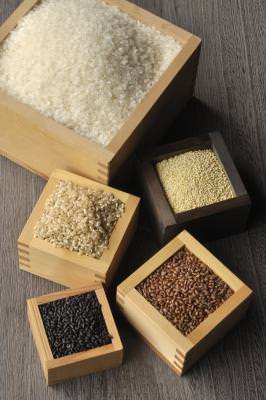Listen to the recorded conference call (Rice information starts at 11 minutes, & 30sec)
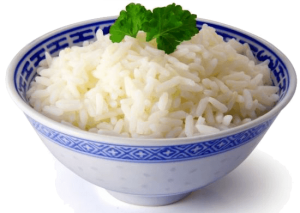 Rice the worlds most used food
Rice the worlds most used food
- Rice is one of the most consumed foods in the world.
- Mainly Asian countries are the big consumers.
- Interestingly as they get wealthier their rice consumption slows. The consumption of meat and dairy increases.
Leading Rice Consumers
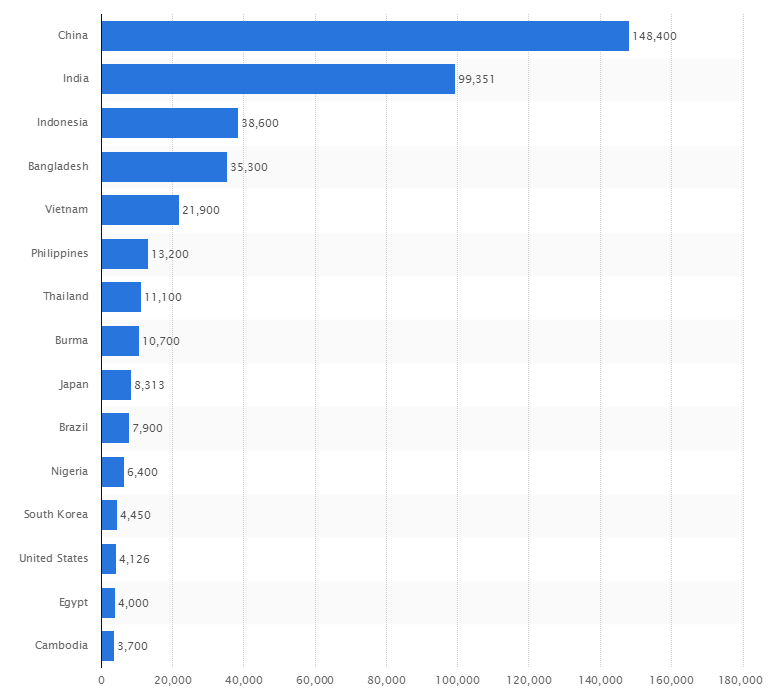
What is rice?
Rice is the seed of the grass species Oryza sativa (Asian rice) or Oryza glaberrima (African rice). As a cereal grain, it is the most widely consumed staple food for a large part of the world’s human population, especially in Asia. It is the agricultural commodity with the third-highest worldwide production, after sugar cane and maize, according to 2012 FAOSTAT data.
Rice is the most important grain with regard to human nutrition and caloric intake, providing more than one fifth of the calories consumed worldwide by humans. Chinese legends attribute the domestication of rice to Shennong, the legendary Emperor of China and inventor of Chinese agriculture.
Genetic evidence has shown that rice originates from a single domestication thousands of years ago in the Pearl River valley region of China. Previously, archaeological evidence had suggested that rice was domesticated in the Yangtze River valley region in China. From East Asia, rice was spread to Southeast and South Asia. Rice was introduced to Europe through Western Asia, and to the Americas through European colonisation.
 Rice can come in many shapes, colours and sizes. There are many varieties of rice and culinary preferences tend to vary regionally. In some areas such as the Far East or Spain, there is a preference for softer and stickier varieties. In Australia as with most western countries the preference is for refined white rice.
Rice can come in many shapes, colours and sizes. There are many varieties of rice and culinary preferences tend to vary regionally. In some areas such as the Far East or Spain, there is a preference for softer and stickier varieties. In Australia as with most western countries the preference is for refined white rice.
The reason for this is because over many years we have been sold white rice. It is easier for the food factories because it keep longer and we have simply become accustomed to the taste and that is our preference.
White rice versus brown rice
We all know of brown rice, and white rice but how many different types of rices are there?
- Long or medium grain white rice
- Short grain white rice
- Jasmine rice
- Basmati rice
- Calrose rice
- Arborio rice
- Brown rice
- Sushi or koshihikari rice
- Wild rice
- Clever rice
- Black Rice
Most varieties of rice can either be purchased as a white rice or a brown rice. White is used as it keeps longer, is quicker to cook, and because people have become used to the taste of white rice it has become the preferred rice from a taste point of view.
How does rice end up being white?
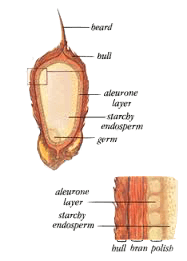 Rice as it is picked. It includes what is called the hull. Obviously anything that is processed usually becomes a white mono nutrient which is detrimental to our health. Here is how rice that is harvested becomes white!
Rice as it is picked. It includes what is called the hull. Obviously anything that is processed usually becomes a white mono nutrient which is detrimental to our health. Here is how rice that is harvested becomes white!
Harversting
Once the plants have reached full growth (approximately three months after planting) and the grains begin to ripen. The tops begin to droop and the stem yellows, the water is drained from the fields. As the fields dry, the grains ripen further and harvesting is commenced.
Drying
Before milling, rice grains must be dried in order to decrease the moisture content to between 18-22%. This is done with artificially heated air or, more often, with the help of naturally occurring sunshine. Rice grains are left on racks in fields to dry out naturally. Once dried, the rice grain, now called rough rice, is ready for processing.
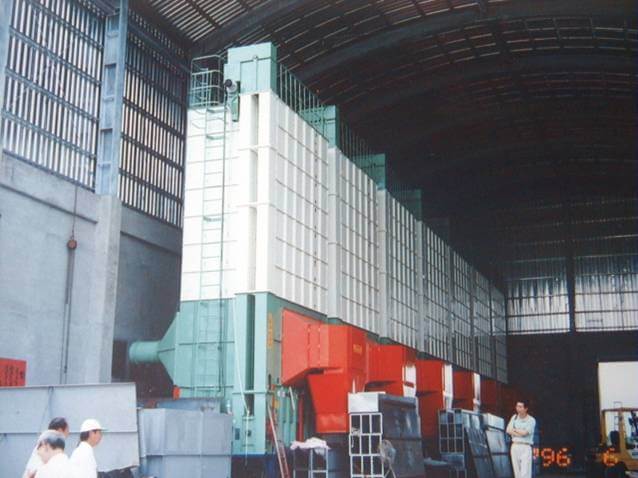
Rice Drying Factory
Hulling
Hulling can be done by hand by rolling or grinding the rough rice between stones. However, more often it is processed at a mill with the help of automated processes. The rough rice is first cleaned by passing through a number of sieves that sift out the debris. Blown air removes top matter.
Once clean, the rice is hulled by a machine that mimics the action of the hand-held stones. The shelling machine loosens the hulls from the rice by rolling them between two sheets of metal coated with abrasives. 80-90% of the kernel hulls are removed during this process.
From the shelling machine, the grains and hulls are conveyed to a stone reel that aspirates the waste hulls and moves the kernels to a machine that separates the hulled from the unhulled grains. By shaking the kernels, the paddy machine forces the heavier unhulled grains to one side of the machine, while the lighter weight rice falls to the other end. The unhulled grains are then siphoned to another batch of shelling machines to complete the hulling process. Hulled rice grains are known as brown rice.
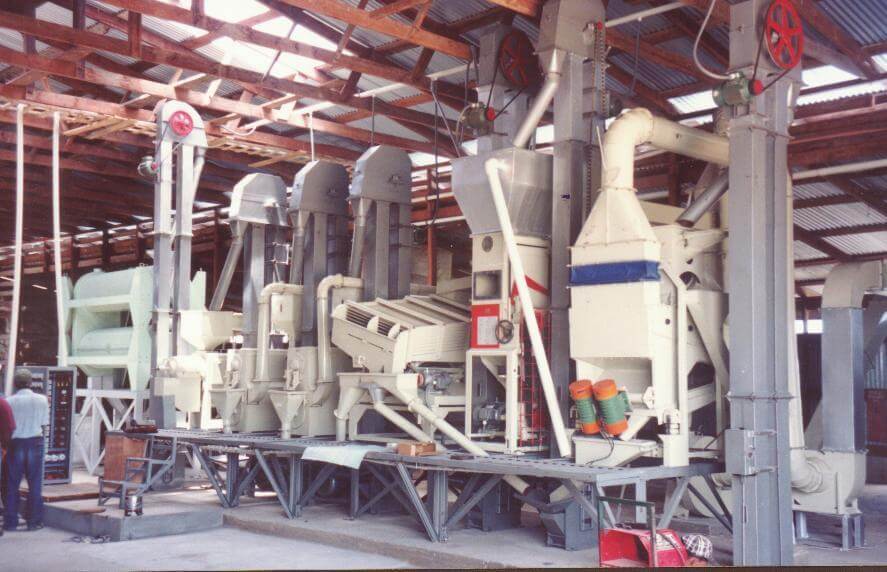
Rice Hulling Plant
Milling
The brown rice runs through two huller machines that remove the outer bran layers from the grain. With the grains pressed against the inner wall of the huller and a spinning core, the bran layers are rubbed off. The core and inner wall move closer for the second hulling, ensuring removal of all bran layers.
The now light-colored grain is cooled and polished by a brush machine.
The smooth white rice is conveyed to a brewer’s reel, where over a wire mesh screen broken kernels are sifted out. Often times, the polished white rice is then coated with glucose to increase ouster.

Rice Milling Plant
The milling process that produces white rice also removes much of the vitamins and minerals found primarily in the outer bran layers. Further processing is often done in order to restore the nutrients to the grain. Once complete, the rice is called converted rice.
Enriching
Rice that has already been milled can be submersed in a vitamin and mineral bath that coats the grains.
Processed Rice
Because rice when harvested is 46% carbohydrate, by the time that it goes through this process it becomes a processed simple carbohydrate.
Upon ingestion within a few short minutes it is metabolised into sugar in unnatural quantities in an unnatural time frame.
It has just become a high GI food that can be equivalent to ingesting sugar.
Which Rice?
The glycemic index is a way of measuring how fast a particular food is digested and the effect that it has on your blood sugar levels.
White bread is assigned a value of 100 and other foods are compared with that. White rice has a higher GI and brown rice is lower GI, in addition other factors make brown rice a healthier choice for your menu.
All carbohydrates are not digested by your body at the same rate. A better way to measure the digestibility of carbohydrates is the glycemic index.
This glycemic index measures the changes in blood sugar levels after you eat a particular food. Foods that cause large increases in blood sugar levels have a high glycemic index, while those that don’t cause large increases have a low GI. Typically, foods that contain sugars rapidly boost blood sugar levels and so have a high GI. Starchy foods are digested more slowly and tend to have a lower GI.
White Rice
White rice is the same plant as brown rice, but white rice is actually only the inner part of the rice grain. The milling process removes the indigestible outer hull and the bran, leaving only the starchy white endosperm.
Because the milling process removes vitamins from the rice, in the U.S. most white rice has B vitamins added back into it.The glycemic index of white is 44 for converted rice, 56 for long-grain white rice and 72 for short-grain white rice.
Brown Rice
Brown rice is less processed than white rice. The rice grains have the outer hull removed, but the underlying bran and germ layers are left on the grain. The bran layers are what make the rice brown. Brown rice is more nutritious than white rice because the bran contains vitamins, minerals and oils. It also has more fibre than white rice. Brown rice is sometimes called whole-grain rice. The glycemic index of brown rice is 55, putting it about equivalent to long-grain white rice.
Brown rice is a better food than white rice because of the additional fibre and nutrients it contains. Since a larger amount of fibre contributes to fullness, you may eat less and thus have a lower glycemic load from brown rice.
Which is the best rice?
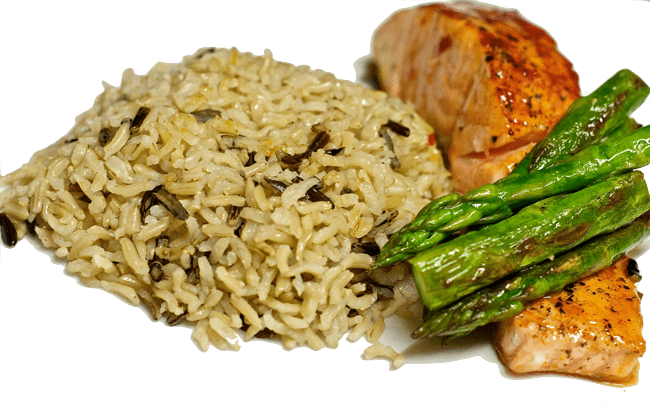
Wholegrain Basmati Rice
Basmati rice, particularly wholegrain Basmati rice can and should be a regular addition to the diets of people who suffer from diabetes.
Basmati rice is a naturally low energy food but as with all carbohydrate foods, it’s the portion size that is important.
An average serving of boiled basmati rice is 150-180g providing 207-248 calories; a small serving (100g) provides approximately 138 calories.
By contrast a typical takeaway portion of fried rice is 300g providing 558 calories, so it’s important not to assume all rice types are the same.
Don’t forget, if it is white it becomes sugar much quicker.
Be careful selecting your rice
lain white jasmine rice has a high GI of approximately 109 as compared to basmati rice which has a GI of 58. With low GI foods like basmati, you can keep your hunger and your weight in control.
In 1 Cooked Cup
Sweet, Sticky, or Waxy Rice:
37 grams of carbs,
1.7 g of fibre
GI = 86
Black Rice:
32 grams of carbs,
2 g of fibre,
GI = 78
Basmatti Rice:
44 grams of carbs,
1 g of fibre,
GI = 58
Wild Rice:
35 grams of carbs,
3 g of fibre
GI = 57
With low GI foods like basmati and black rice, you can keep your hunger and your weight in control.

